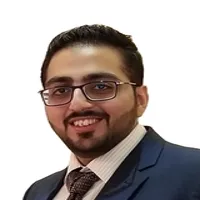What Approaches Do You Take to Maintain Language Diversity?
Exploring various strategies to maintain language diversity, we’ve gathered insights from professionals like a Translator/Interpreter and a Founder and CEO. While they share their unique approaches, we’ve included additional answers to provide a broader perspective. From consuming media in different languages to creating digital language archives, here are several impactful methods that have shaped their work.
- Consume Media in Different Languages
- Implement Multilingual Communication Tools
- Adopt a Localized-Content Strategy
- Document Endangered Languages
- Develop Dual-Language Educational Programs
- Promote Multilingual Policies in Public Spaces
- Engage in Revitalization Projects with Communities
- Create Digital Language Archives
Consume Media in Different Languages
Reading and consuming media in different languages, mainly in my native tongue of Spanish, and my second language, which is English. Language, as the living thing it is, constantly evolves. Keeping up-to-date with current speech is imperative in reaching predominantly Spanish-speaking immigrant communities.
Implement Multilingual Communication Tools
As a DEI Consultant for multinational organizations, one approach I've taken to maintain language diversity is implementing multilingual communication tools and resources within the workplace. By providing materials and support in various languages, we've ensured that all employees can access and understand essential information, fostering an inclusive environment.
This practice has not only enhanced employee engagement and satisfaction but also improved collaboration and productivity across diverse teams. This has allowed us to attract and retain a more diverse talent pool, enriching our organizational culture. From my years of experience, I've found that embracing language diversity has significantly strengthened our commitment to inclusivity and equity in the workplace.

Adopt a Localized-Content Strategy
I focus on maintaining language diversity through a localized-content strategy. This strategy involves creating marketing materials and communication tailored to specific languages and cultural contexts. It goes beyond translation by adapting content to resonate culturally, which includes modifying imagery, tone, and calls to action to align with local customs and preferences. The first step includes conducting thorough market research to identify key markets for this approach.

Document Endangered Languages
Linguists often focus on documenting endangered languages to ensure they are preserved for future generations. This involves recording interviews with native speakers, compiling dictionaries, and creating written records of the language's grammar and syntax. The goal is to capture the full richness and complexity of the language before it disappears.
By taking these steps, linguists can help safeguard unique cultural knowledge embedded within the language. This documentation can serve as a crucial resource for future language revival efforts.
Develop Dual-Language Educational Programs
Developing dual-language educational programs is another effective approach taken by linguists to maintain language diversity. These programs aim to teach students two languages simultaneously, usually their native language alongside a widely spoken one. By integrating both languages into the curriculum, children grow up bilingual, keeping their ancestral language vibrant while also gaining skills in a second language.
Such education ensures that the younger generation remains connected to their cultural roots. These programs also foster greater understanding and tolerance between different linguistic communities.
Promote Multilingual Policies in Public Spaces
Promoting multilingual policies in public spaces is a critical strategy employed by linguists to maintain language diversity. By ensuring that signs, announcements, and official documents are available in multiple languages, municipalities can make minority language speakers feel included and valued. This approach not only supports the everyday use of less common languages but also raises awareness of the linguistic diversity within a community.
Such efforts can reduce language barriers and enhance social cohesion. Moreover, public recognition of multiple languages reinforces their legitimacy and importance.
Engage in Revitalization Projects with Communities
Revitalization projects with native communities are fundamental to maintaining language diversity. Linguists work directly with speakers of endangered languages to develop resources such as books, curriculum, and language classes. These projects often encourage community-based learning, where native speakers teach their language to younger generations.
This hands-on involvement not only fosters language transmission but also empowers communities by valuing their linguistic heritage. Such initiatives help rebuild a sense of pride and identity among language speakers. Support these revitalization efforts to help save endangered languages.
Create Digital Language Archives
Creating digital language archives is an innovative strategy used by linguists to preserve and maintain language diversity. These digital archives store audio recordings, written texts, and other linguistic materials that can be easily accessed and shared online. By leveraging technology, linguists ensure that even the most obscure languages become available to researchers, educators, and the general public worldwide.
This accessibility opens up opportunities for new language learning and revitalization projects. Digital archives also protect linguistic data from being lost due to physical degradation over time. Encourage the development of digital archives to keep our linguistic heritage accessible.

